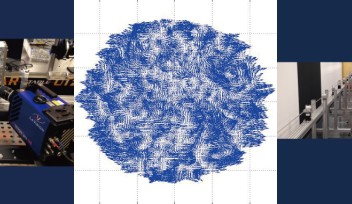New pumping strategy could slash energy costs of fluid transport by 22%

A collaboration between the Okinawa Institute of Science and Technology (OIST) and the Polytechnic University of Milan has found that when a fluid is pumped through a pipe in an intermittent way, the cost of transport is significantly reduced.
In their proof-of-concept study, the researchers used numerical simulations to show that when they periodically switched a pump on and off, the fluid flow kept transitioning between a turbulent and laminar state. This reduced energy costs by up to 22% – a figure which the researchers say can be further optimized.
Laminar flows, like the kind you see when you slowly crack a tap open, are smooth, streamlined and energy efficient. Turbulent flows, on the other hand, such as those when a tap runs full blast, are chaotic and waste energy.
“If you inject ink into a laminar flow, you’ll see a clear line of ink moving down the pipe, but with a turbulent flow, the ink diffuses as each fluid particle takes an unpredictable path. This chaotic motion at the small scales results in a lot of energy being lost,” explained Giulio Foggi Rota, first author and a first-year PhD student in the Complex Fluids and Flows Unit. “Laminar flows are ideal for fluid transport, but when viscous fluids move fast and over large scales, the system naturally evolves towards a turbulent state.”
Reducing turbulence, and therefore the costs of moving fluids through pipes could bring numerous economic and environmental benefits. The transport of fluids makes up a significant part of the final cost of fuel, so liquid hydrogen could become cheaper for developed countries to transition to. For developing countries that are not yet able to make the switch to green energy, oil and natural gas could become a more affordable energy alternative to firewood, the use of which contributes to deforestation and produces more harmful pollutants than fossil fuels.
In the study, the researchers created a code that, when run on a powerful supercomputer, was able to simulate a standardized turbulent flow.
The scientists ran different scenarios, changing the duration of time that the pump was switched on, the intensity of the pump (how fast it accelerated the fluid), and the overall length of time for each on-off pump cycle.
They found that long cycles characterized by a short, intense pump that quickly accelerated the fluid flow, and then a long phase where the pump was switched off and the fluid slowed down, worked best for keeping the fluid in a laminar-like state for the longest amount of time.
For the next step, the researchers want to try to better understand the physics underlying the repeated transition between the turbulent and laminar-like states.
“If we can gain a fuller understanding of why the fluid behaves like it does due to unsteady pumping, then we will be much closer to working out what is the optimal pumping strategy for saving the most amount of energy,” said Professor Marco Edoardo Rosti, who leads the OIST Complex Fluids and Flows Unit.
This article was published recently in Scientific Reports.
Article Information
Specialties
Research Unit
For press enquiries:
Press Inquiry Form














